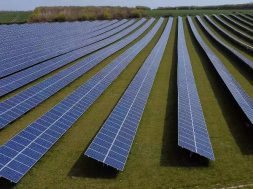
Will next-gen solar cells help India save $900 million?
The University of New South Wales (UNSW) in Australia has claimed that the next generation of its research on solar cell technology could help the Centre save more than $900 million (over ₹6,000 crore).
Claiming that the Passivated Emitter and Rear Cell (PERC) technology developed by the university could be a game changer in India’s renewable energy ambitions, Laurie Pearcey, Executive Director (International) of UNSW, said the technology demonstrates that solar could be a major part of India’s energy mix.
“The nation will be able to have both – low carbon and low cost – energy future. India needs to find the right balance between environmental outcomes and economic efficiencies, and we know this is possible,” he said.
How it differs
PERC technology differs from other commercial cells in the way that it reduces the contact between silicon and aluminium using insulation, which helps minimise energy losses.
The technology is forecast to have a global market share of 45 per cent by 2024.
According to a release, the technology will be showcased during a round table discussion in Sydney on October 27 to India’s Renewable Energy Minister Piyush Goyal, and ahead of the UNSW’s President and Vice-Chancellor’s visit to India next month.
University sources are considering the visit to explore knowledge exchange partnerships with a range of Indian industry, government and university stakeholders.
‘Huge saving’
UNSW Scientia Professor Stuart Wenham said: “The jump in efficiency could result in massive savings for India’s renewables agenda. With our technology, the cost of producing 1 GW of solar power is reduced by $6,000.
“For India to achieve its goal of 100 GW of solar power capacity by 2022, it needs to build around 15 GW of solar power every year. Our technology could bring annual savings of up to $900 million (around ₹6,000 crore)”.
“Hydrogenated PERC technology is another landmark step in bringing cost-effective and highly efficient solar power to the world,” he added.
“This technology removes a very important roadblock allowing manufacturers to produce low-cost high efficiency solar cells. What this means is that efficiency gains from new cells will be passed on to consumers and investors like the Indian government, resulting in huge savings for large plants and reducing the payback time on investment,” Wenham stated.
















